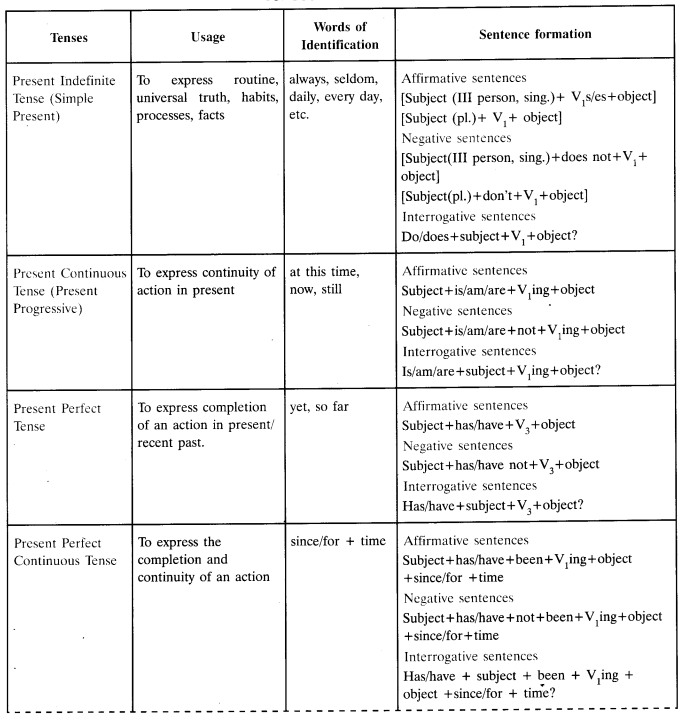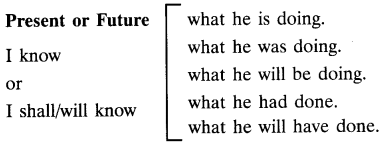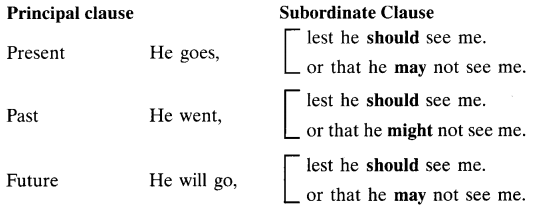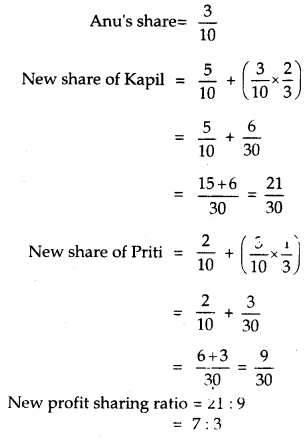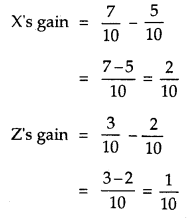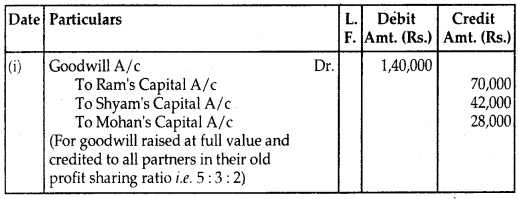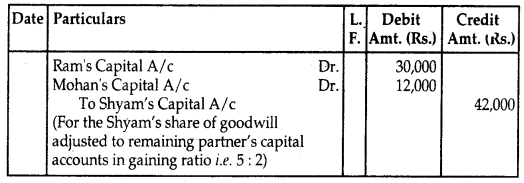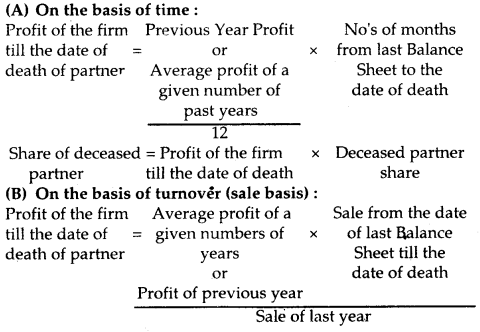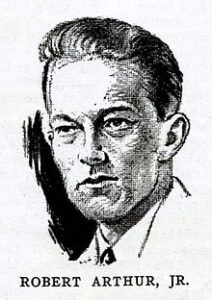Here we are providing Online Education for Animals Extra Questions and Answers Class 10 English First Flight, Extra Questions for Class 10 English was designed by subject expert teachers. https://ncertmcq.com/extra-questions-for-class-10-english/
Online Education for Animals Extra Questions and Answers Class 10 English First Flight
Animals Extra Questions and Answers Short Answer Type
Animals Class 10 Extra Question Answer Question 1.
Why does the poet wish to live with animals?
Answer:
The poet wishes if he could be transformed and live with animals. The poet thinks that animals Eire self contained, peaceful, unambitious, uncomplaining, simple Eind honest. He finds himself more like Einimsds.
Animals Class 10 Extra Questions Question 2.
About what do the animals not ‘whine’ and ‘weep’?
Answer:
The animals do not show anxiety or distress nor do they moan about the condition in which they live.. The animals do not lie awake in the dark and weep for their sins.
Animals Poem Class 10 Extra Questions And Answers Question 3.
‘Not one kneels to another, nor to his. kind that lived thousands of years ago.’ How does the poet distinguish between animals and human being in these lines?
Answer:
The poet wishes to convey that the EinimEils do not kneel before others especially before the ones who lived thousand of years ago. But the humsm beings indulge in hero worship and kneel to another human beings, who might have lived thousands of years ago.
Animals Poem Class 10 Extra Questions Question 4.
What does the poet wish to convey through the follow ing lines?
‘Not one is dissatisfied, not one is demented with the mania of owning things’.
Answer:
The poet feels more at home with animals than with human beings. It is because he thinks that none of the animals is discontented about its condition. Moreover, like humanbeings the animals are not crazy about possessing the material things.
Animals Extra Questions Question 5.
How does the poet react to man’s ways? Why?
OR
“The poem ‘Animals’ is a satirical comment on man’s way”. Justify.
Answer:
MEUI commits sin, repents, complains about his condition; preach about his duties to God. He desires to own everything. He encourages differences Eind pretends to be concerned for the whole earth. The poet dislikes and is fed up of all this. So he wishes to turn away from man’s world and live with animals.
Animals Extra Questions Answers Question 6.
What message does the poem “Animals’ wish to convey?
OR
What is the central idea of the poem “Animals”?
Answer:
The poem “AnimEds” comments upon man’s degraded condition. He himself has dropped his goodness way behind and now, he suffers due to lack of it. So, man should not lose his basic nature—his simplicity, satisfaction, honesty and place. He should not create differences in the name of god.
Extra Questions Of Animals Class 10 Question 7.
How, according to the poet, have animals got the ‘token’?
Answer:
According to the poet, humans have been just like animals in their basic nature a long time ago. In their march to civilization, they grew negligent towards it. Thus, they lost their basic nature Eind virtues, but animals still possess their basic nature. The poet imagines that animals got it from where humans lost it and have retained and preserved it since then.
Animals Poem Extra Questions Question 8.
How are animals better than man?
OR
Mention three things that humans do and animals don’t?
Answer:
The poet has drawn three comparisons between humans and animals.
- Humans sweat and work hard to make a living and later whine and sulk about the amount of work they have to do to survive. Animals, on the other hand, do not whine about their condition.
- Humans lie awake at night and cry for the wrongs they have done. Animals do not weep for anything they do and sleep peacefully.
- Finally, humans make each other sick by discussing their duties to god. However, animals do not have any god and they live and survive without any prayers or fasts.
Extra Questions Of Poem Animals Class 10 Question 9.
We must not cry at our work condition rather we must either try to accept or improve if we can’—Explain it with reference to the poem ‘Animals’ composed by Walt Whitman.
Answer:
Change is the rule of nature. Everything undergoes some change with the passage of time. Some changes face the better conditions while some touch the worse. Being partner of the changing situations, we should be able to accept both happiness and sadness that emerge from the womb of change. They are cyclic. We must not be selective all the time. We must not weep over our sadness.
This is what one of things the poet finds missing among human beings unlike animals. Animals never weep or bother for their worsening condition. They embrace whatever comes in their ways be it joy or pain. They do not set back and start grudging and grumbling about their bad condition. The poem teaches us that we should learn from the qualities of animals who live in peace and content of atmosphere.
Class 10 Animals Poem Extra Questions Question 10.
It is not complaining but accepting a situation is the key to happiness in life. Elaborate in context of the poem “Animals”.
Answer:
The greatest quality which a person can posses is to accept the situation quietly. If we learn to do things quietly then earth will sure become nice place to live on. We have dropped certain token of love, fellow feelings, sympathy, respect, co-operation, friendship, these qualities will only make us accept the things as they are and not to lose our identity. A person who has lived in a given situation peacefully, has always strived to the top.
The poem ‘Animals’ gives very important- messages. We human beings are gripped with feelings of ill- will, hatred, despise but animals are faraway from these ideas. We should learn from animals to be happy and let others live happily.
Animals Class 10 Important Questions Question 11.
The poet in the poem (Animals’ laments the loss of certain values on part of human beings, where as animals seem to have retained them and are self-contained. Analyse the cause of degeneration of values in today’s hard times.
Answer:
The poet, Walt Whitman, has got a clear understanding of this universe. He has very rightly brought before us the importance of traditions and values. He has understood that animals are self contained and fully satisfied with their lot. We human beings are never satisfied.
The values of human life are degenerating and rise in materialism is the major cause of these conflicts. Human beings are developing qualities such as ill-will, hatred, bloodshed and cruelty. Due to these conflicts there is no love and understanding. Thus dwindling human values are making people blood thirsty and evil.
Question 12.
Write the central idea of the poem “Animals’.
Answer:
In the poem “Animals’ the poet ‘Walt Whitman’ praises animals for being better than human beings. The human beings have left the qualities of kindness and innocence. The poet wants to live among the company of animals and experience life free of sins. The poet believes that long ago humans possessed those qualities which have been left. The poem teaches us to learn from qualities of animals who live in peace and contentment.
Question 13.
Notice the use of the word ‘turn’ in the first line, “I, think I could turn and live with animals…” What is the poet turning from?
Answer:
The poet is turning away from living with other humans as he finds them complicated and false. He would rather live with animals that are self-contained and non-complaining.
Question 14.
Mention three things that humans do and animals don’t.
Answer:
The poet has drawn three comparisons between humans and animals.
- Humans sweat and work hard to make a living and later whine and sulk about the amount of work they have to do to survive. Animals, on the other hand, do not whine about their condition.
- Humans lie awake at night and cry for the wrongs they have done. Animals do not weep for anything they do and sleep peacefully.
- Finally, humans make each other sick by discussing their duties to god. However, animals do not have any god and they live and survive without any prayers or fasts.
Question 15.
Do humans kneel to other humans who lived thousands of years ago? Discuss this in groups.
Answer:
Yes, human beings eulogise and kneel to other human beings who lived thousands years ago. For instance they worship their heroes, their warriors or their saints unlike animals. As only human beings have the sense to do so, they worship their heroes and saints, but animals do not do it.
Question 16.
What are the ‘tokens’ that the poet says he may have dropped long ago, and which the animals have kept for him? Discuss this in class. (Hint: Whitman belongs to a Romantic tradition that includes Rousseau and Wordsworth, which holds that civilisation has made humans false to their own true nature. What could be the basic aspects of our nature as living beings that humans choose to ignore or deny)?
Answer:
The poet says that long ago he might have dropped the tokens or symbols of a feeling, a fact, an event etc or memorials of affection which the animals have kept from him. The poet holds that civilisation has made humans false to their own true nature. That is why he considers animals more natural, innocent and true as compared to human beings.
Animals Extra Questions and Answers Reference to Context
Read the following stanza and answer the questions that follow:
Question 1.
I think I could turn and live with animals, they are
so placid and self-contain’d,
I stand and look at them long and long.
(i) Name the poem and poet.
(ii) Who is “I” in the stanza.
(iii) What does the speaker wish to do?
(iv) Whom does the poet look at?
Answer:
(i) This line have been taken from the poem “Animals” composed by Walt Whitman’.
(ii) T refers to the poet in the stanza—Walt Whitman’.
(iii) The speaker (poet) wishes to live with the ‘Animals’.
(iv) The poet looks at the animals for a long time while standing.
Question 2.
They do not sweat and whine about their condition,
They do not lie awake in the dark and weep for their sins,
They do not make me sick discussing their duty to God,
Not one is dissatisfied, not one is demented with the mania of owning things,
(i) Who are ‘the/ in the stanza?
(ii) What is the general attitude of a man?
(iii) Pick out the word from the stanza that means the same as—‘complain’.
(iv) Name the poem and poet.
Answer:
(i) ‘They’ in the stanza stands for the ‘Animals’.
(ii) The general attitude of a man is repressed, dissatisfied and complaining.
(iii) “Whine’ means complain.
(iv) The poem “Animals” written by “Walt Whitman’.
Question 3.
Not one kneels to another, nor to his kinds that
live thousands of years ago,
Not one is respectable or unhappy over the whole earth.
(i) What is the attitude of the animals towards other animals?
(ii) What do the animals do not do?
(iii) Explain ‘not one is respectable’.
(iv) Name the poem and poet.
Answer:
(i) The animals do not consider other animals as their superior.
(ii) The animals do not worship their look alike.
(iii) It means that, unlike men, all are equal among animals.
(iv) The poem “Animals” written by Walt Whitman’.
Question 4.
So they show their relations to me and I accept them,
They bring me tokens of myself, they evince
them plainly in their possession.
(i) What facts does the speaker accept?
(ii) What does the speaker mean by the phrase ‘tokens of Myself?
(iii) What have the animals preserved?
(iv) Name the poem and poet.
Answer:
(i) The speaker accepts the facts that there is a close relation between the man and the animals.
(ii) The speaker means simplicity and other basic features of the early mankind.
(iii) Animals have preserved and retained the tokens dropped by the men.
(iv) The poem “Animals” written by Walt Whitman’.
Question 5.
I wonder where they get those tokens,
Did I pass that way huge times ago and negligently drop them?
(i) According the poet what have the animals retained?
(ii) Why, according the poet, man has lost his basic goodness?
(iii) Pick out the word from the stanza that means the same as—‘irresponsibly’.
(iv) Name the poem and poet.
Answer:
(i) According to the poet, the animals have retained the basic simplicity and honesty dropped by men.
(ii) Man has lost his basic goodness because of his negligence.
(iii) ‘negligently ‘
(iv) The poem “Animals” written by Walt Whitman’




